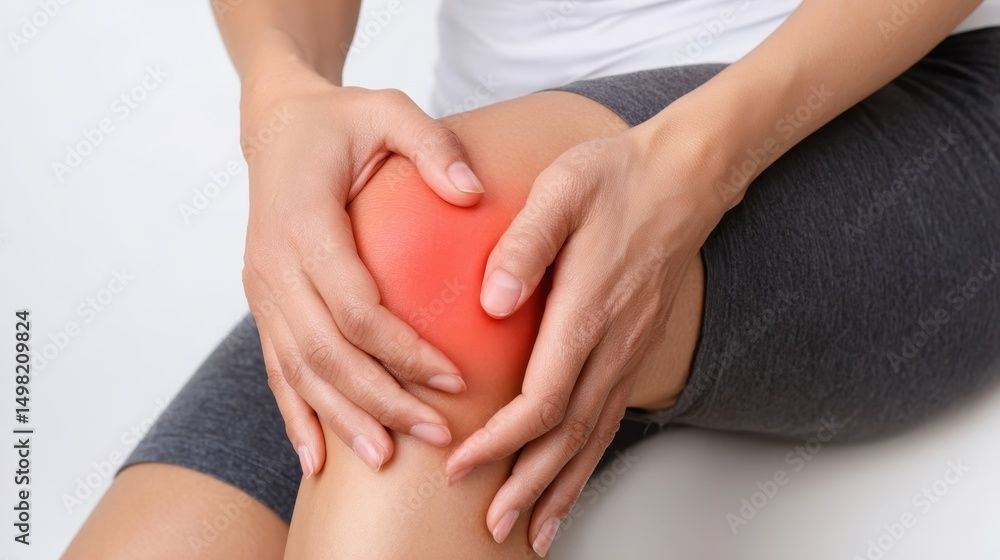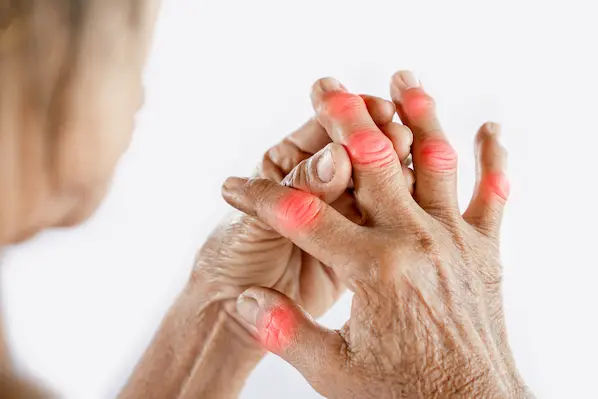Managing Arthritis in Old Age: A Complete Guide to Pain Relief & Mobility
Managing arthritis in old age requires the right approach to pain relief, mobility, and lifestyle adjustments. This guide explores effective treatments, exercises, and supportive strategies to improve daily living, independence, and overall quality of life.


Arthritis is often seen as an inevitable part of growing older—a simple case of "wear and tear" we must accept. But what if that narrative is incomplete? While arthritis in old age is common, affecting millions of seniors worldwide, it doesn't have to define your golden years. This condition, characterized by joint inflammation, pain, and stiffness, can indeed pose significant challenges to mobility and independence. However, with the right knowledge and a proactive approach, you can manage the symptoms effectively and continue to lead a vibrant, active life. This comprehensive guide moves beyond just listing symptoms and delves into actionable strategies—from targeted exercises and an anti-inflammatory diet to modern medical treatments and smart lifestyle adaptations. Our goal is to empower you with the tools to manage arthritis pain, protect your joints, and reclaim your joy of movement. Let's explore how you can take control and thrive.
Understanding Arthritis
Arthritis isn't a single disease; it's an umbrella term for over 100 conditions that affect the joints. For seniors, understanding the specific type is crucial for effective management.
Osteoarthritis: The Common Age-Related Arthritis
Osteoarthritis (OA) is the most prevalent form of arthritis in older adults. It occurs when the protective cartilage that cushions the ends of your bones wears down over time. This leads to pain, swelling, and difficulty moving the joint. It most commonly affects joints in the hands, knees, hips, and spine. Think of it like the tread on a tire; after decades of use, it naturally becomes thinner. Risk factors include age, obesity, joint injuries, and genetics.
Rheumatoid Arthritis: An Autoimmune Challenge
Rheumatoid Arthritis (RA) is an autoimmune disorder where the body's immune system mistakenly attacks its own tissues, primarily the synovium (the lining of the membranes that surround the joints). This results in painful swelling that can eventually cause bone erosion and joint deformity. RA often affects joints symmetrically (e.g., both wrists or both knees) and can be accompanied by fatigue and fever. Unlike OA, it is not caused by wear and tear.
Other Types of Arthritis to Be Aware Of
Other forms include gout (caused by uric acid crystal buildup), psoriatic arthritis (linked with the skin condition psoriasis), and septic arthritis (a joint infection). If you experience sudden, severe joint pain, redness, or fever, it is critical to consult a doctor online with Apollo24|7 for a prompt evaluation to rule out infectious causes.
Key Strategies for Managing Arthritis Pain Daily
Effective daily management combines movement, weight control, and simple pain-relief techniques.
The Power of Movement: Exercise and Physical Therapy
It may seem counterintuitive, but staying active is one of the best ways to combat arthritis pain. Exercise strengthens the muscles around your joints, providing better support, and helps maintain flexibility and range of motion.
Best Low-Impact Exercises for Seniors with Arthritis
- Swimming and Water Aerobics: The buoyancy of water supports your weight, reducing stress on joints while providing resistance for strength training.
- Walking: A simple, accessible way to get your heart pumping. Use supportive shoes and walk on soft, even surfaces.
- Tai Chi and Yoga: These mind-body practices improve balance, flexibility, and strength through gentle, flowing movements.
- Stationary Cycling: Provides an excellent cardiovascular workout with minimal impact on knees and hips.
Weight Management: Easing the Load on Your Joints
Every extra pound you carry exerts about four pounds of extra pressure on your knees. Losing even a small amount of weight can significantly reduce joint pain and slow the progression of arthritis. A combination of a healthy diet plan for osteoarthritis patients and regular activity is the most sustainable approach.
Consult Top Specialists
Heat and Cold Therapy: Simple yet Effective Relief
- Heat (a warm towel, hot pack, or warm bath) can relax muscles and improve circulation, ideal for morning stiffness.
- Cold (an ice pack wrapped in a towel) can reduce inflammation and numb sharp pain, best used after activity to soothe a flare-up.
Nutrition and Diet: Fueling Your Joints for Health
What you eat plays a significant role in managing inflammation throughout your body.
Anti-Inflammatory Foods to Embrace
Incorporate foods rich in antioxidants and omega-3 fatty acids to help reduce joint inflammation naturally.
- Fatty Fish: Salmon, mackerel, and tuna are excellent sources of Omega-3s.
- Nuts and Seeds: Walnuts, chia seeds, and flaxseeds.
- Fruits and Vegetables: Berries, leafy greens, and broccoli are packed with antioxidants.
- Olive Oil: Contains oleocanthal, which has properties similar to anti-inflammatory drugs.
Foods to Limit or Avoid for Arthritis
- Processed Foods: High in unhealthy fats, sugar, and salt, which can promote inflammation.
- Red Meat and Fried Foods.
- Refined Carbohydrates: White bread, pastries, and other highly processed carbs.
The Role of Hydration in Joint Lubrication
Cartilage is about 80% water. Staying well-hydrated helps keep this cartilage soft and pliable, aiding in joint lubrication and shock absorption. Aim for 8 glasses of water a day.
Medical and Professional Treatments
When lifestyle changes aren't enough, medical interventions can provide significant relief.
Over-the-Counter and Prescription Medications
Common options include pain relievers (acetaminophen), NSAIDs (ibuprofen, naproxen) to reduce pain and inflammation, and topical creams. For RA, doctors prescribe DMARDs and biologics to slow the disease's progression.
When to Consider Advanced Options: Injections and Surgery
If your symptoms of arthritis flare-up persistently despite other treatments, a doctor may recommend corticosteroid injections for temporary pain relief or hyaluronic acid injections to lubricate the knee. For severely damaged joints, surgical options like joint replacement (arthroplasty) can be life-changing, restoring function and eliminating pain. If your condition does not improve after trying these methods, book a physical visit to an orthopaedic specialist with Apollo24|7 to discuss all available options.
Lifestyle Adaptations for Easier Living
Small changes in your daily routine can make a big difference in conserving energy and protecting your joints.
Using Assistive Devices and Smart Technology
Don't view assistive devices for arthritis in hands as a sign of weakness; see them as tools for independence. Jar openers, reachers, electric can openers, and walking canes can reduce strain and prevent pain.
Protecting Your Joints: Pacing and Energy Conservation
Listen to your body. Alternate between heavy and light tasks throughout the day. Use larger, stronger joints to carry loads (e.g., use a shoulder bag instead of a clutch). Avoid gripping objects tightly for prolonged periods.
The Mind-Body Connection: Mental Health and Arthritis
Chronic pain can lead to stress, anxiety, and depression. Practices like meditation, deep breathing, and staying socially connected are vital for mental well-being. Managing stress can also lower inflammation in the body, creating a positive feedback loop for your physical health.
Conclusion
Living with arthritis in old age requires a shift in perspective—from fighting the condition to skillfully managing it. It's about working smarter, not harder. By integrating regular, gentle movement into your routine, making conscious nutritional choices, utilizing practical tools, and seeking appropriate medical guidance, you can significantly reduce pain and stiffness. Remember, the goal isn't to return to the mobility of your youth, but to maximize your quality of life and independence today. If symptoms persist beyond two weeks, consult a doctor online with Apollo24|7 for further evaluation and a personalized management plan. Your journey with arthritis is unique, and with the right strategies, you can continue to enjoy a fulfilling and active life.
Consult Top Specialists
Consult Top Specialists

Dr. Tanmaya Kumar Sahu
General Physician/ Internal Medicine Specialist
12 Years • MBBS, MD ( Internal Medicine )
Bhubaneswar
Apollo Hospitals Old Sainik School Road, Bhubaneswar

Dr. Zulkarnain
General Physician
2 Years • MBBS, PGDM, FFM
Bengaluru
PRESTIGE SHANTHINIKETAN - SOCIETY CLINIC, Bengaluru

Dr. Thorana Prakash M
General Physician
2 Years • MBBS
Bengaluru
PRESTIGE SHANTHINIKETAN - SOCIETY CLINIC, Bengaluru

Dr. Anand Ravi
General Physician
2 Years • MBBS
Bengaluru
PRESTIGE SHANTHINIKETAN - SOCIETY CLINIC, Bengaluru

Dr Varsha Bhatt
Rheumatologist
20 Years • MBBS, MD (Medicine), Fellowship in Rheumatology
Pune
Apollo Clinic, Wanowrie, Pune
(50+ Patients)
Consult Top Specialists

Dr. Tanmaya Kumar Sahu
General Physician/ Internal Medicine Specialist
12 Years • MBBS, MD ( Internal Medicine )
Bhubaneswar
Apollo Hospitals Old Sainik School Road, Bhubaneswar

Dr. Zulkarnain
General Physician
2 Years • MBBS, PGDM, FFM
Bengaluru
PRESTIGE SHANTHINIKETAN - SOCIETY CLINIC, Bengaluru

Dr. Thorana Prakash M
General Physician
2 Years • MBBS
Bengaluru
PRESTIGE SHANTHINIKETAN - SOCIETY CLINIC, Bengaluru

Dr. Anand Ravi
General Physician
2 Years • MBBS
Bengaluru
PRESTIGE SHANTHINIKETAN - SOCIETY CLINIC, Bengaluru

Dr Varsha Bhatt
Rheumatologist
20 Years • MBBS, MD (Medicine), Fellowship in Rheumatology
Pune
Apollo Clinic, Wanowrie, Pune
(50+ Patients)
More articles from Arthritis
Frequently Asked Questions
What is the main difference between osteoarthritis and rheumatoid arthritis?
Osteoarthritis is a degenerative 'wear and tear' condition where joint cartilage breaks down. Rheumatoid arthritis is an autoimmune disease where the body's immune system attacks the joints, causing inflammation.
Are there any natural remedies for arthritis pain relief I can try at home?
Yes, many find relief with turmeric (curcumin), ginger tea, and Epsom salt baths. However, always discuss supplements with your doctor before starting, as they can interact with medications.
Is cracking my knuckles bad for my arthritis?
No, studies have not shown a link between knuckle cracking and the development of arthritis. The sound is caused by gas bubbles popping in the synovial fluid.
How does weather affect arthritis pain?
Many people report increased pain with changes in barometric pressure and cold, damp weather. The exact reason is unknown, but it may be due to tissues expanding and contracting with pressure changes.
When should I consider surgery for my arthritis?
Surgery is typically considered when conservative treatments (medication, physical therapy, lifestyle changes) no longer provide adequate relief, and the pain significantly interferes with daily activities like walking or sleeping.




